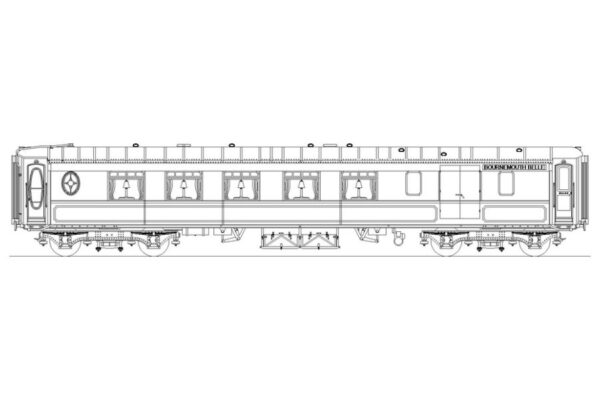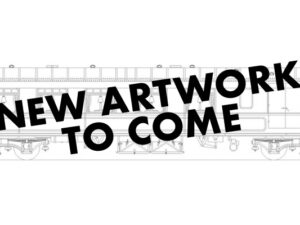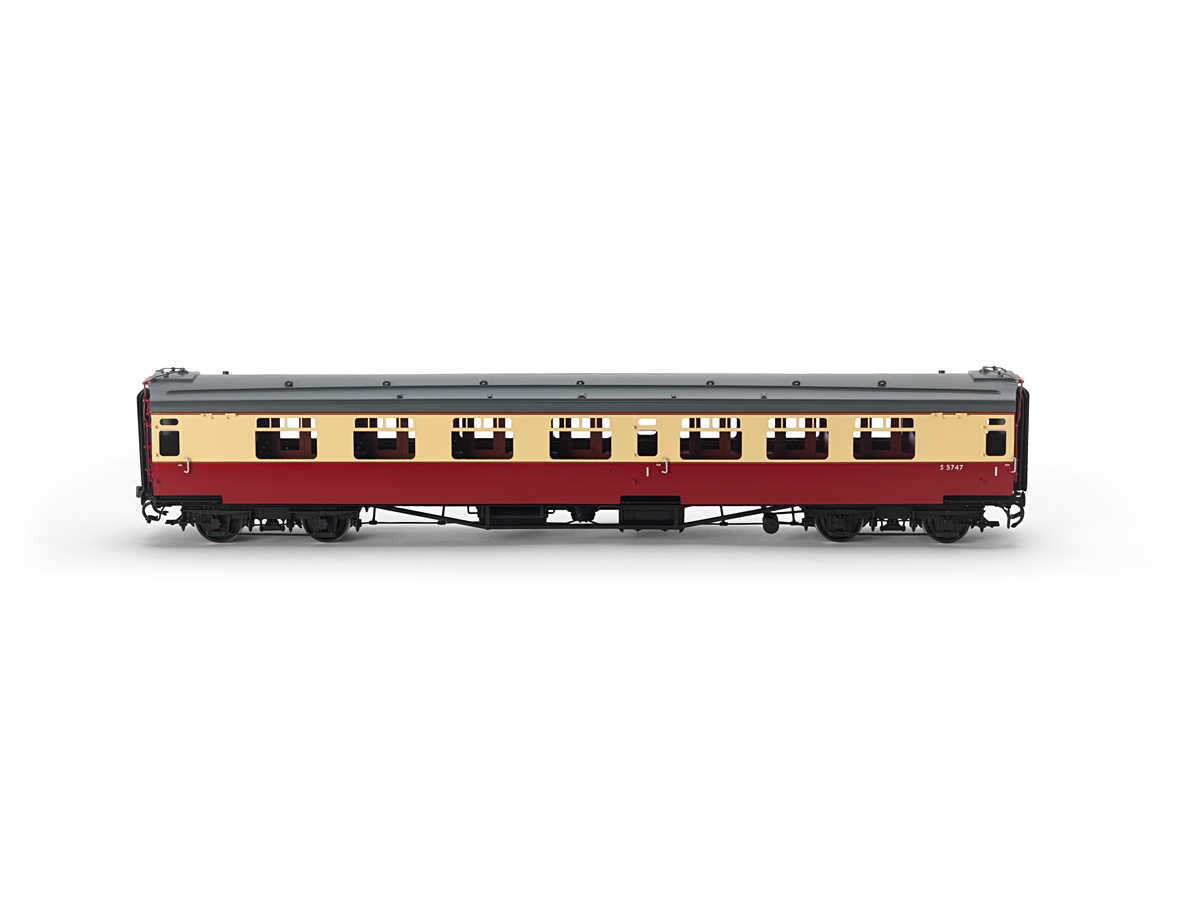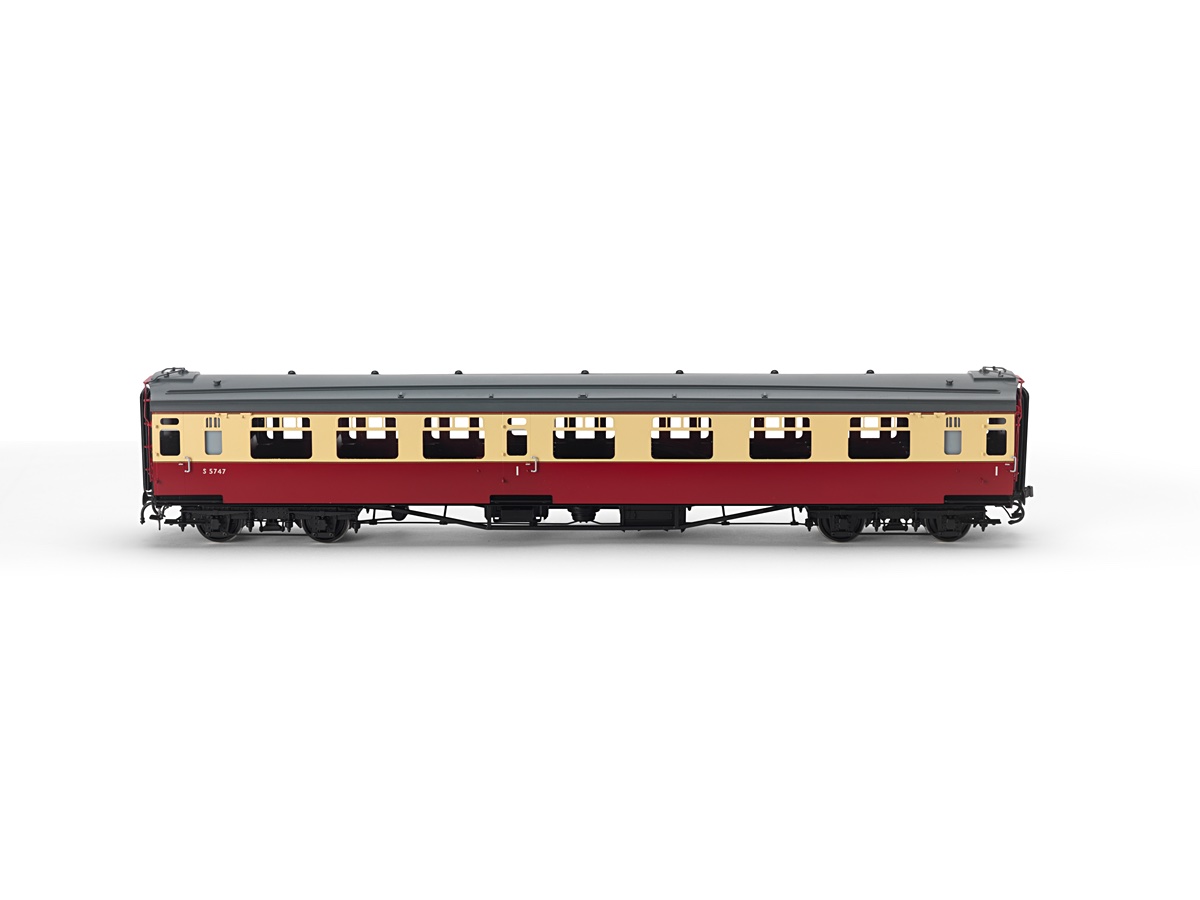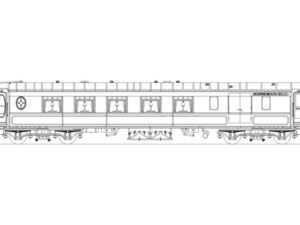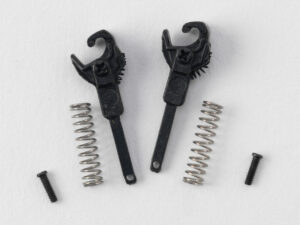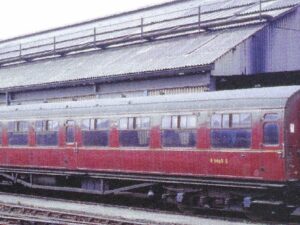K-Type Pullmans come as follows:
- First and third-class parlour cars
- First and third-class kitchen cars and
- Third-class parlour brakes.
Only four of the original K-Type cars were ever built as third-class parlour brakes – none as first-class parlour brakes. However, six of the original K-Type third-class kitchen cars nos. 67-72 were later converted into parlour brake cars and these form an additional BR period Pullman brake offering. The rebuilt parlour brakes are different to the original set cars nos. 77-80 built for Queen of Scots’ running. The differences include revised roof layout at luggage end, smaller drop windows on either side of the guard’s luggage area, no roof brackets as carriage boards moved to the cantrail at brake car ends and revised light fitting above guard’s door. They were of a more modern appearance.
Whilst there was always a degree of fluidity over how Pullman cars were allocated to specific regions and services, cars marked with * were originally scheduled for GWR and then Southern Railway Pullman services. Cars marked with ~ were specifically assigned to the Bournemouth Belle. Named and numbered Pullman cars without suffixes largely operated on east coast routes with the Queen of Scots and West Riding Pullman etc.
Options for reservation
All Pullman cars come in umber and cream livery with grey roofs.
Individual car price: £1,250
Pairs of Pullman brakes and two other cars £4,780
Orders of more than four vehicles are priced at £1,195 per car.
Pullman car specifications:
- Meticulously researched using original drawings, image material and examples of preserved and modified stock
- Beautiful hand-made solid brass fine scale soldered construction ensuring superb body detail – note roof bodies are constructed in brass
- Interior lighting provided by central LED roof lighting and Pullman table lamps
- Finished in long-lasting and robust oven baked satin paint
- Carriage nameboards commemorating famous Pullman expresses
- Ball bearing mounted axel boxes for free running bogies
- Solid stainless steel disc wheels
- Three coupling types: Pullman cars come with standard Kadee style couplings. Conversion packs for screw link drop or alternative buckeye couplings are available
- Removeable bodies for the fitting of figures.
Pullman Brakes
In 1928 six new steel-sided third-class Pullman K-Type kitchen cars nos. 67-72 were introduced to the long-distance Queen of Scots’ service. At the end of the 1950s, they were converted into parlour brake cars. Reproduced in umber and cream livery to complement the later BR era, these renewed parlour brakes are different to the original set of four brake cars nos. 77-80 built for Queen of Scots’ running. The differences include revised roof layout at luggage end, smaller drop windows on either side of the guard’s luggage area, no roof brackets as carriage boards moved to the cantrail at brake car ends, removal of the third-class designation, and the adoption of simplified lining and updated Pullman crest and insignia.
Typically, the parlour brakes ran top and tail with a new set of 44 Pullman cars built by Metropolitan-Cammell Carriage & Wagon Company in 1960. Aside the main East Coast Pullmans such as Queen of Scots, Tees-Tyne Pullman and Yorkshire Pullman, new named express services appeared including White Rose Pullman, Sheffield Pullman, and The Harrogate Sunday Pullman. The converted brake sets lasted until the demise of the old life expired Pullman stock providing innovative and highly attractive models and express train formations of a more modern provenance. The new 1960 Metro-Camm Pullman cars, designed around Mk1 carriage technology, will be a later Shamrock Finescale project, and another first to fine scale RTR O gauge modelling.
On delivery customers may choose between either a named train roof board or carriage side board. These are supplied in umber and cream. If customers wish to obtain further Pullman named train or car end boards, they can be purchased via our carriage sundries page. Current named train boards suitable for Pullman cars are as follows:

